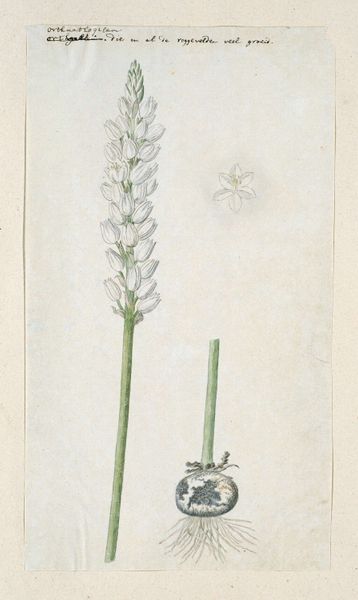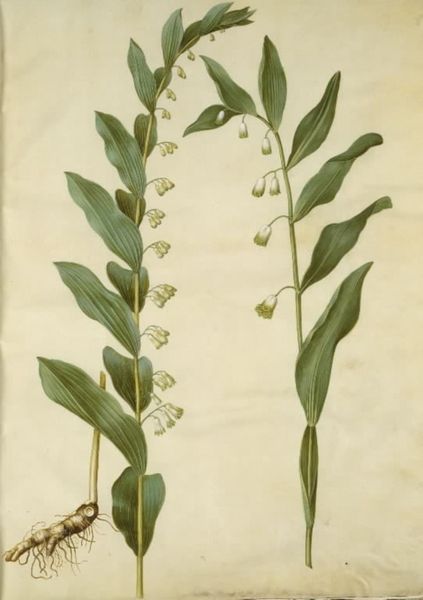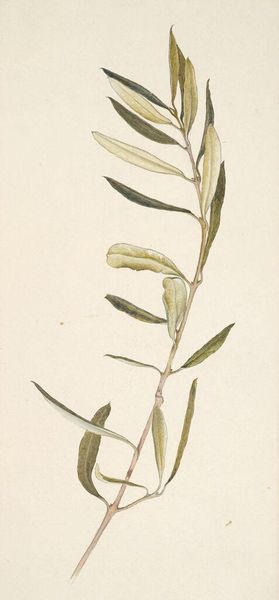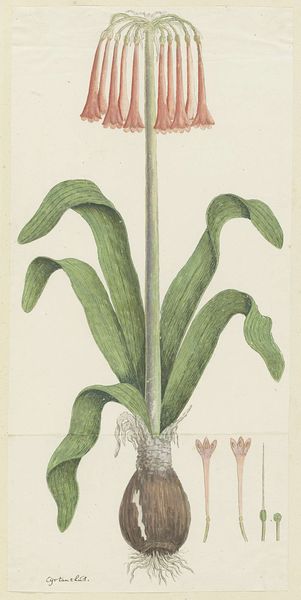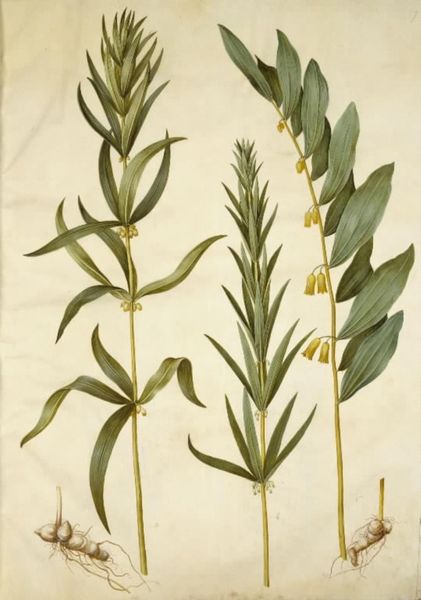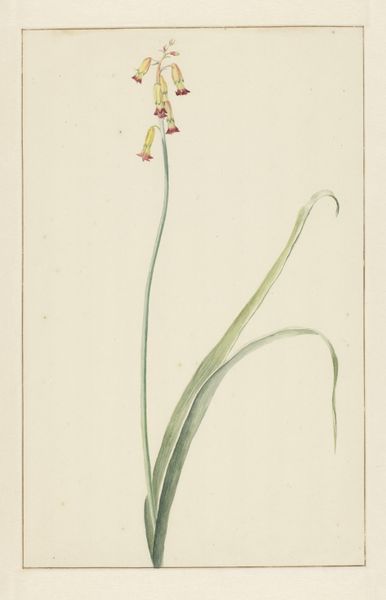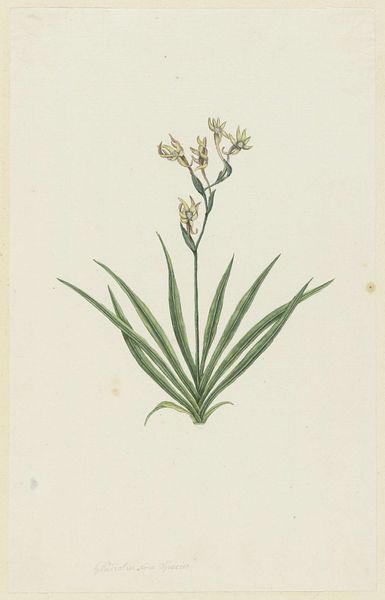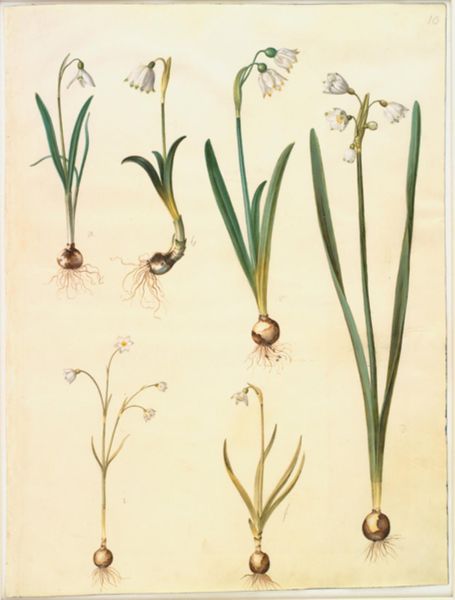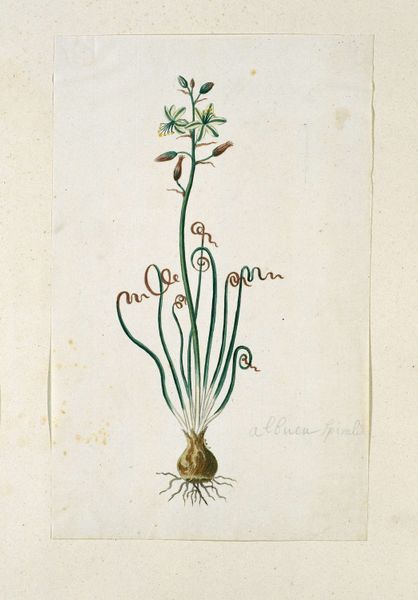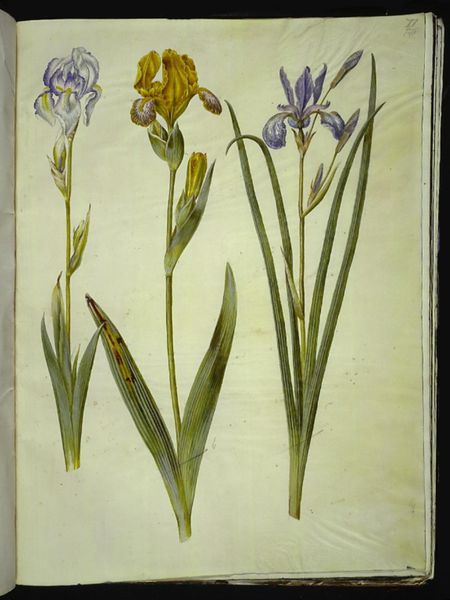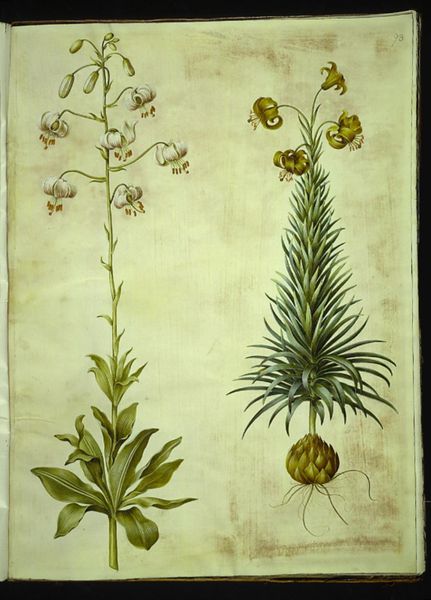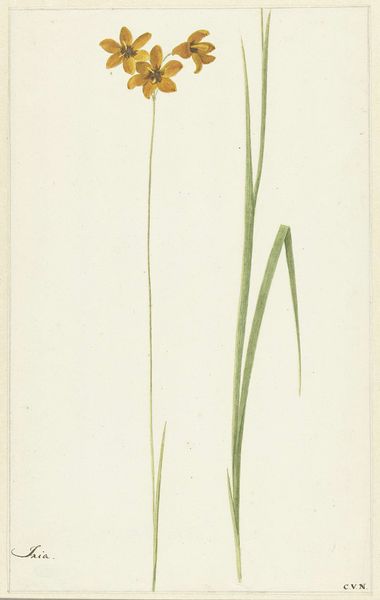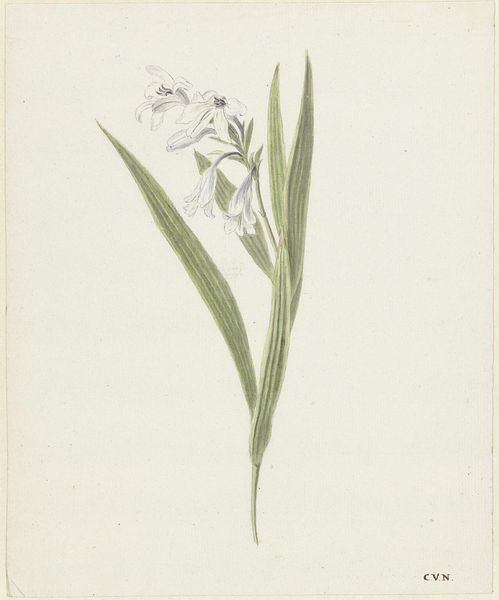
drawing, watercolor
#
drawing
#
flower
#
oil painting
#
watercolor
#
plant
#
botany
#
northern-renaissance
#
watercolor
#
realism
Copyright: Public domain
Curator: Welcome. Before us is Albrecht Dürer’s “Iris,” a watercolor drawing from 1503, housed here at the Kunsthalle Bremen. Editor: It’s astonishing, isn't it? The simplicity… yet the verticality creates such an immediate impression of stately elegance. And such delicate shading; you can practically feel the velvety texture of the petals. Curator: Indeed. Dürer’s naturalism emerged in tandem with humanist study of classical natural philosophy. The choice of subject matter reflects a cultural fascination with botany as an accessible manifestation of God’s design during the early 16th century. These botanical studies were popular. Editor: The color choices also create a subtle mood, wouldn’t you agree? The muted purples and greens…they're so subtly interwoven. The slightly yellowed paper serves as ground, enhancing that somber elegance, maybe hinting to a scientific specimen cataloged during Dürer's era. Curator: Dürer’s choice to foreground this native bloom offers us clues about Augsburg’s cultural and intellectual environment. You see, botanical studies became a demonstration of regional pride—a visual argument that local specimens surpassed foreign wonders. The very act of meticulous, scientific illustration reinforced civic self-regard, differentiating the area and promoting burgeoning local commerce. Editor: Interesting how you framed the flower as a type of early branding... I see it so formally. The elegant and elongated forms suggest the influence of earlier masters while using the transparent luminosity of watercolor creates something so entirely new. There is something essentially transient captured with exacting precision in this image. Curator: I find your characterization incisive and persuasive, particularly within a cultural landscape shaped by the power of burgeoning mercantile interests and ever-changing public displays. Dürer’s work captures both the ethos of observation and its inherent connection to the marketplace. Editor: Yes, a perfect specimen and reflection. Well, this exercise leaves me thinking that true artistic dialogue requires just such interplay between form and historical intention. Curator: I couldn’t agree more, and hope our conversation inspires you to probe more thoughtfully in the future.
Comments
No comments
Be the first to comment and join the conversation on the ultimate creative platform.
